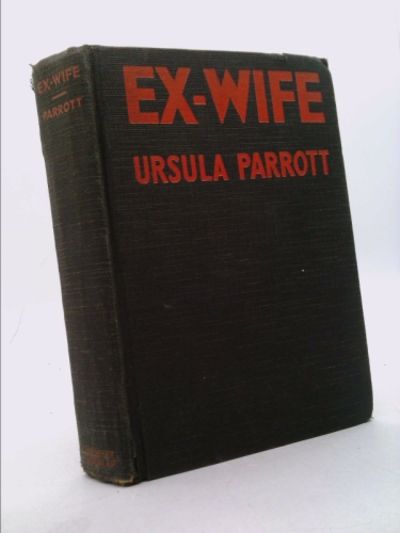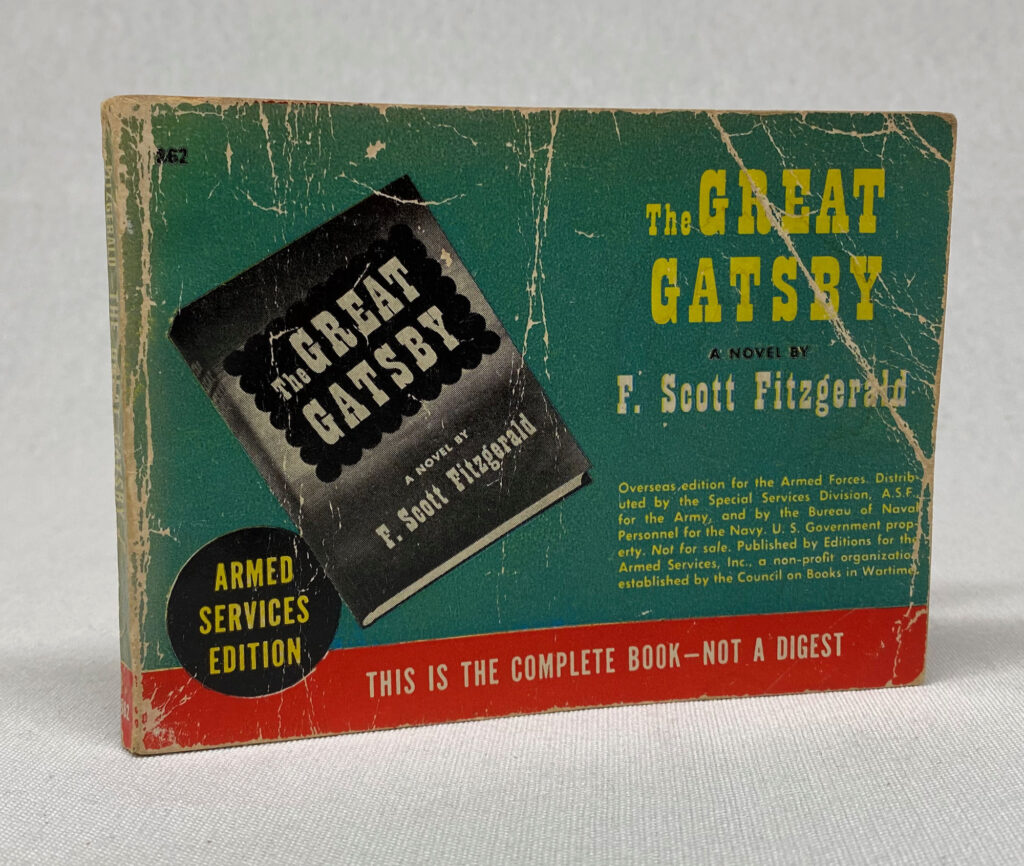
Marsha Gordon’s new biography of the best-selling author Ursula Parrott, Becoming the Ex-Wife: The Unconventional Life & Forgotten Writings of Ursula Parrott (University of California Press, 2023), rescues this important author’s life from obscurity, and she hopes to reignite enough interest to get her long-out-of-print works back into the public eye. Both Gordon’s biography, and the 2023 publication of a McNally Edition of Parrott’s 1929 novel Ex-Wife have garnered a lot of well-deserved attention.
Who is Ursula Parrott?
Born Katherine Ursula Towle in 1899 in the Boston neighborhood of Dorchester to a successful physician, ‘Kitty’ as she was known, matriculated with mediocre grades from Radcliffe, married a Princeton man two years younger than herself, and moved to New York City. There the young, brilliant couple enjoyed a glamorous life working as reporters amid the excitement of the roaring twenties. Her first husband, Lindesay Marc Parrott, vehemently opposed having children, with a sincere desire to focus on his career and freewheeling life. In this pre-Sexual Revolution/Comstock-Act era, even writing about birth control was illegal, and soon after they wed, Ursula got pregnant.
Scared to tell her husband, she returned home to Boston to have her son, Marc, in 1923, without him knowing. She left the child with her father and sister and returned to New York. When her husband finally uncovered the secret, the two were divorced. During this time, Parrott began to write and publish the pieces that would make her both famous and wealthy. In 1929 she published Ex-Wife. The novel was considered so scandalous that it was first published anonymously, although the author’s identity was soon outed by a gossip columnist. Later the same year, Parrott penned a manifesto regarding divorced women called “Leftover Ladies,” published in Mentor Magazine in December 1929.

After her divorce, Parrott fell in love with Hugh O’Connor, a reporter who encouraged her writing career but would never marry her. This love affair was central to Parrott’s life, and the letters she wrote to O’Connor make up much of the raw material for Gordon’s biography.
Parrott went on to have three more brief marriages. For two decades, she worked diligently at writing, publishing twenty novels and over a hundred stories, essays, and articles in popular magazines such as Cosmopolitan, Redbook, McCalls, and Ladies Home Journal.
She also worked in Hollywood as a scriptwriter. By the end of her career, ten films had been produced from her writings, and many more were optioned. Divorcee, based on the novel Ex-Wife, earned the lead, Norma Shearer, an Oscar for Best Actress.
Writing Born of Necessity
Although she achieved fame and success as a popular writer of her day, Parrott claimed in interviews, like this one in Photoplay magazine from 1931, that she only wrote out of necessity:
“I am not a feminist,” she said. “In fact, I resent the feminists — they are the ones who started all this. I wonder if they realized what they were letting us all in for. We don’t want this freedom. We only work when we are forced, by pressure, to do so… Mary Roberts Rinehart, Kathleen Norris — and many more who come to mind, worked because they had to work and for no other reason… When a woman cannot look to marriage as the end and aim of her existence, she turns to her career. She takes on the support, as a rule, of her family. I didn’t go to work until I was divorced and it was necessary for me to support my child. Now I have many responsibilities — but without the compensations. I do a man’s job and earn much more than the average man, but when I’ve finished my working in the evening I come home to what?”
Her books were considered romance novels, although they often dealt with unromantic scenarios like divorce, adultery, and abortion. Her son points out in his afterward of the 1989 edition of Ex-Wife that she “forged the dreams she sold to “Cosmo” or Redbook for the delectation of the 1930s housewives.”
During the height of the Great Depression, Parrott was making the equivalent of millions of dollars a year, but as her son also points out, “she went through every penny of it, and more.” She stopped writing by 1947 and died poor, homeless, and forgotten in the charity ward of a New York Hospital at the age of 58.
Contemporary Competition in Collecting:
So why did Parrott fall to obscurity while contemporaries such as Fitzgerald (born 1896) and Hemingway (born 1899) gain popularity?
Fitzgerald’s first novel, This Side of Paradise, published in 1920, sold nearly 50,000 copies and was considered successful. But his seminal work, The Great Gatsby, famously sold less than 25,000 copies between publication in 1925 and Fitzgerald’s death in 1940. So how did Gatsby get so popular, selling over 25 million copies worldwide, an additional 500,000 copies annually? After Fitzgerald died at the young age of 44 his stories began to be reprinted. Then, during WWII, The Great Gatsby was picked to be printed as a pocket-sized Armed Services Edition book, and 155,000 copies were shipped to American soldiers. The rest is history – it gained popularity, received critical attention, and became a classic included on every bookstore’s shelves and almost every school’s curriculum list.
The vast majority of the titles published in the Armed Services editions were written by men – and Parrott was not on the list of the 1,324 titles published. It is not surprising she didn’t make the list – by the 1940s, she had fallen out of favor in the publishing industry for failing to meet deadlines and her long-time agent and friend George Bye had dropped her after years of her excuses and pleas for personal loans. One of the most decided factors that assured most American soldiers were not going to gravitate to her work was her 1942 arrest on federal charges for aiding in the desertion of a 26 year old Army Private.
The guard at the Miami Beach Army stockade saw the woman, aging (40) Ursula Parrott, author of Ex-Wife and herself four times married, hide the handsome boyfaced soldier prisoner in the back of her car…To many a Hausfrau, wrinkling into middle age, this saga of the popular author of slick, sleek magazine pap was a thrill beyond her daily hopes…Readers could turn to any of Author Parrott’s 14 books to find many a lush passage written in that hot chocolate sauce that has pleased so many followers of her (up till now) fictional romances.
From Time Magazine
Ernest Hemingway is another contemporary of Parrott’s that is still selling strong and on nearly every school reading list. Like Fitzgerald, there are dozens of biographies about every aspect of Hemingway’s life, most of his novels have stayed in print, and the press did not dog him as ‘aging’ as he reached 40.
Hemingway’s third novel, A Farewell to Arms, was his first best-seller. It sold 100,000 copies in the first year it was published. Ex-Wife was published the same year, 1929, and sold as many copies. Whereas first editions of A Farewell to Arms now value $25,000 and up, first editions of Ex-Wife, if you can find them, generally are without their original dust jacket and are listed at around $100.
The book we picked as the ‘most collectible‘ “Modern First” of 1929, is Virginia Woolf’s A Room Of One’s Own. Woolf was 18 years older than Parrott and led a very different life – secure not only in marriage to the activist and publisher Leonard Woolf, but also cultivated by her relationship with the poet Vita Sackville-West. Same-sex relationships between women at that time were kept hushed and did not threaten the status quo. Woolf’s decidedly feminist essays became central to the women’s movement in the 1970s, and her stream-of-consciousness style pioneered 20th-century writing styles.
Another female contemporary of Parrott’s that remains relevant today is Margaret Mitchell. In her early twenties, Mitchell, like Parrott, became a reporter through financial need when her first marriage fell apart. After she remarried, Mitchell sustained an ankle injury and chose to quit her reporting job after four years in the field.
Although she was divorced, there wasn’t much scandal after she remarried, and her husband urged her to begin writing the novel that would become Gone with the Wind. Released in 1936, Gone with the Wind was Mitchell’s only published novel and was awarded the National Book Award and the Pulitzer Prize in Literature. In 1949 Mitchell was struck by a taxi and killed. First editions of Mitchell’s only novel can cost $20,000 and higher, often accompanied by ephemera from the famous film released in 1939.
Kathleen Norris wrote over 80 novels and numerous short stories for ladies’ magazines from 1911 through the 1950s, in the same’ romance writing vein as Parrott. Her books, like Mother, Woman in Love, and Beauty’s Daughter, were very popular but eluded critical praise. Still, many can be found today, and they are still read with a nostalgic eye towards wholesome domestic tales and portrayal of early 20th century New York Irish Catholic family life.
Parrott Preserved
In Becoming the Ex-Wife, it is clear Gordon mined all the archives and saved what she could of this fascinating and accomplished woman’s life from obscurity. Would things have turned out differently for Parrott if she had not been an ex-wife? Would she go on to write twenty books and hundreds of articles if she had stayed married, raised her son, and tended a garden in a suburb of Boston instead of enjoying the speakeasies of New York City? She claims to have wanted that more than the fame and notoriety she received, but even modern women struggle with balancing career and family. It’s a theme that, after the third wave of feminism, we still regard with dis-ease and without answers.

While today we work to separate the biography of the writer from the work – this content still explains why some writers stand the test of time while others are lost to history. Both Fitzgerald’s and Hemingway’s womanizing, alcoholism, and family abandonment are more acceptable as male writers and “geniuses” than Parrott’s. Parrott was a victim of her time and gender, but at least there are scholars like Gordon saving brilliant females from the fire. And rare booksellers and collectors working to preserve their work!
Brief Bibliography
Parrott’s novels are out of print, except for the recent re-release by McNally Editions of Ex-Wife (2023).
Becoming the Ex-Wife by Marsha Gordon provides a bibliography of Parrott’s published works (novels, stories, and articles), along with a list of her work’s film adaptations (ten total) and the known scripts she was hired to work on.
Strangers May Kiss (1930)
Gentleman’s Fate (1931)
Love Goes Past (1931)
The Tumult and the Shouting (1933)
The Woman Accused (1933)
Next Time We Live (1935)
Heaven’s Not Far Away (1942)
One More Such Victory (1942)
Storm at Dusk (1943)
Even in a Hundred Years (1944)
Amy C. Manikowski is a writer living in Asheville, NC.









I enjoyed your introduction to the life of Parrott, and plan on getting Marsha Gordens the Ex wife.
Hi!! I want you to know that you had my attention on what to collect… BRAVO